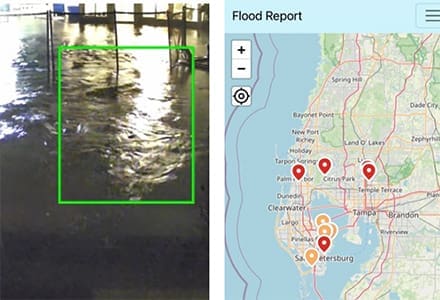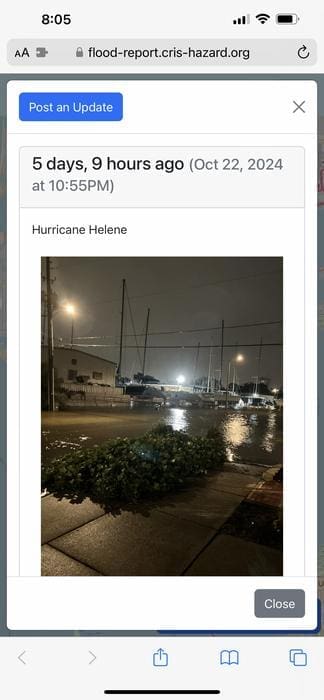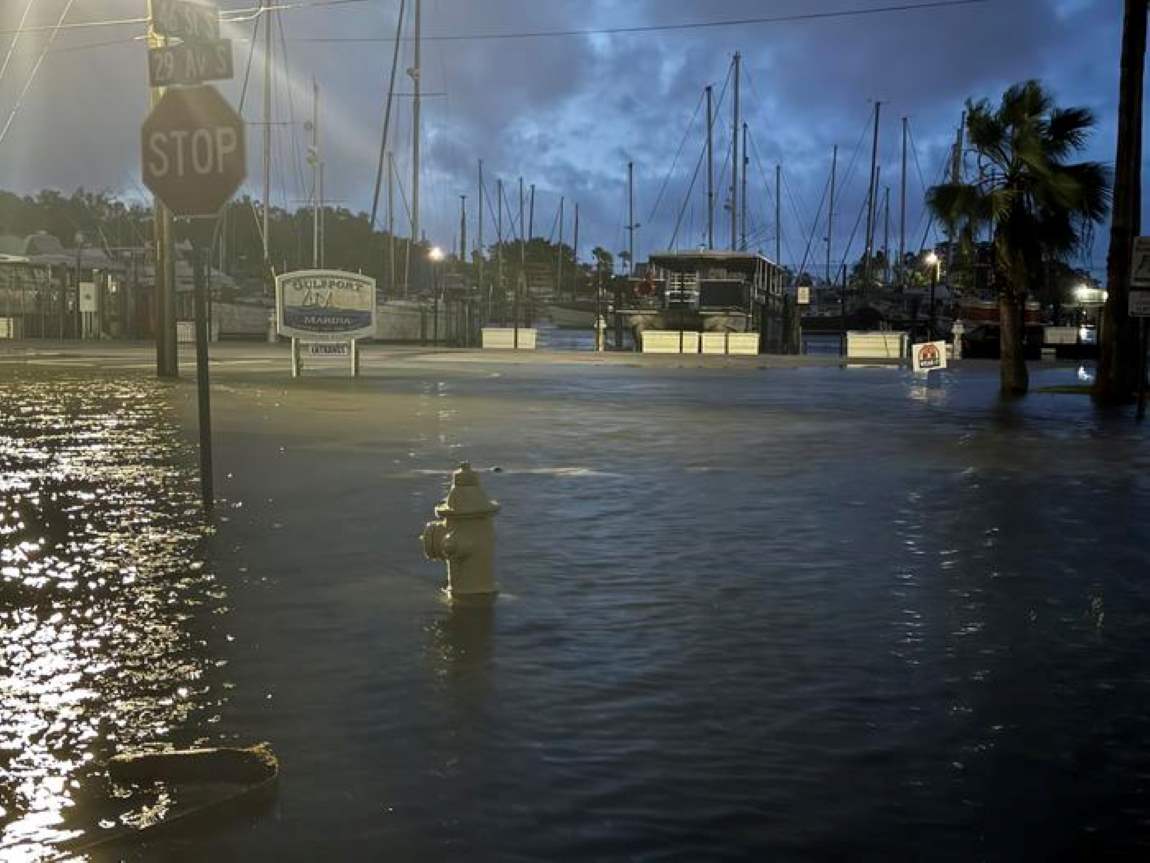TAMPA, Fla., USA | USF – A web-based application that gathers crowdsourced data to identify flooding and inform policy in coastal communities provided University of South Florida scientists with essential data from hurricanes Helene and Milton.
The team of researchers led by USF St. Petersburg GIS and Remote Sensing Professor Barnali Dixon used the CRIS-HAZARD app to analyze real-time flooding in Pinellas County, which is home to 588 miles of coastline. The app also received data from users in neighboring Hillsborough County during Hurricane Milton, which allowed the team to expand its research.

The app, developed in collaboration with researchers at Georgia Tech, combines volunteered geographic information and community crowdsourced data such as photos and videos with near real-time data on flooding. Using dynamic modeling and mapping tools, including artificial intelligence (AI), the app can identify and extract estimated water elevation from imagery submitted that will be used to inform emergency managers and policymakers.
The CRIS-HAZARD app made a soft launch on Sept. 18. Eight days later, Hurricane Helene hit Florida’s west coast north of Tampa Bay as a Category 4 hurricane. On Oct. 9, Hurricane Milton hit Florida’s west coast south of Tampa Bay as a Category 3 hurricane.
Images gathered from the back-to-back storms gave the team important information about how much flooding occurred and where in the Tampa Bay area.
“People used it to report what was happening in their backyard,” said Dixon, who is also executive director of USF’s Initiative on Coastal Adaptation and Resilience (iCAR). “This information is their lived experience, and we want to take that experience and make data out of it using AI tools that will process images and figure out the depth of the water. We can use that data to calibrate and validate models.”
In addition to the data provided for researchers, the pictures and videos are accessible to other users so they can see where flooding is happening, which helps inform them of hazards in the community.
Dixon compares it to the real-time traffic app Waze, where drivers can see traffic back-ups and where police activity is happening along roads and highways.

“We make it a real-time display for about seven days, then the data is archived,” Dixon said. “For example, if there is a big rain event today, you want to know what is happening today, not a month or two months back. But the data stays there so we can access and analyze it.”
In 2023, Dixon received a $1.5 million National Science Foundation grant to build the app. Since then, her team has made significant progress. They have installed 14 cameras in St. Petersburg, with 30 more planned throughout Pinellas County.
The cameras are placed in front of five-foot poles with reflective tape that show flooding as it’s happening. Each strip is placed six inches apart. Images captured by the cameras during Hurricane Helene indicate that about 3.5 feet of water rose above the seawall in many locations.
The new app, which provides an interactive user experience, is based on the existing Community Resiliency Information System (CRIS), a website created in 2020 by iCAR.
The CRIS platform leverages crowdsourced data to identify climate-related vulnerabilities in local communities. Residents can input information related to issues such as flooding and power outages. This information can then be used by policymakers and neighborhood leaders to make decisions about policy and resource allocation. The data also allows emergency managers to identify areas with concentrations of people who need transportation assistance or are reliant on power for medical needs.
Dixon has been working with community leaders in St. Petersburg’s Childs and Bartlett Park neighborhoods for several years, where residents have successfully used the system to prepare for extreme storm events. Through the CRIS website, participants can view maps and see their risk of storm surge and sea level rise. They can also share their own information and suggest ways to improve the system.
“We have used the application at all our community town halls,” said Erica Hall, executive director of the Florida Food Policy Council. “As a community leader and liaison, this will help communities tremendously to understand the connection between sea level rise, climate change, extreme heat and coastal flooding. Some vulnerable coastal neighborhoods also show food insecurity and health disparity concerns. Having CRIS map those concerns tells a story that will allow the community to understand.”
As principal investigator, Dixon developed the app alongside co-principal investigators Yi Qiang from the USF School of Geosciences and two others from Georgia Tech, Subhrajit Guhathakurta from the College of Design and Peng Chen from the College of Computing.
The research team will continue to work with community partners in St. Petersburg and other flood-prone coastal areas of Pinellas County to refine the app. As the CRIS-HAZARD app gains users and data, the team hopes to make it available to communities nationwide.
Article Source:
Press Release/Material by Sarah Sell | University of South Florida
Featured image: User-submitted photo to the CRIS-Hazard app from Hurricane Helene. Credit: University of South Florida (USF)




